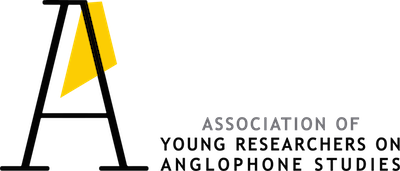Making Herstory: A Reading of Miller’s Circe and Atwood’s Penelopiad (pp. 9-25)
Ester Díaz Morillo
Universidad Nacional de Educación a Distancia (UNED)
Abstract
This article is concerned with herstories and the retelling of myths. For the purpose of the present research, we will analyse Madeline Miller’s Circe and compare it to Margaret Atwood’s The Penelopiad. North-American author Madeline Miller gives voice to goddess and sorceress Circe, protagonist of this book inhabited by other Homeric characters. For its part, The Penelopiad is a novella written by Canadian author Margaret Atwood in a series of rewritings of myths. In this book, based on the Homeric Odyssey, the focus is turned to Penelope, wife of Odysseus, who tells us her story from the Hades, as well as to her maids, hanged by Telemachus after Odysseus’s return. Both books are, therefore, related to Greek mythology and, more precisely, to Homer’s Odyssey. Both authors aim at retelling those myths through a female perspective, making use of herstory in order to do so. Analysing the novels from the perspective of feminism, we will see how the authors make their revisions of a canonical work in order to give voice to previously silenced voices in history how they present their female characters by calling myths into question, and, therefore, by challenging male authority and patriarchal society.
Keywords: herstory; myths; women; Odyssey; feminism
Bionote
Ester Díaz Morillo is a PhD candidate in English Literary Studies at the Universidad Nacional de Educación a Distancia (UNED), Spain. Her doctoral research focuses on the study of the poetic language and how it can be translated, adapted or transferred into other languages or artistic media such as painting and music.
e-mail address: esterdiaz.92@gmail.com
References
Atwood, Margaret. 2006. The Penelopiad. Toronto: Vintage Canada.
Cixous, Hélène. Summer 1976. “The Laugh of Medusa”. Signs, trans. by Keith Cohen and Paula Cohen, 1.4: 875-893.
Díaz Morillo, Ester. Spring 2019. “Representations of Victorian Womanhood in Waterhouse’s Lamia and La Belle Dame sans Merci”. The PRS Review, 27.1: 10-15.
Hodges, Kate. 2020. Warriors, Witches, Women: Celebrating Mythology’s Fiercest Females. London: White Lion Publishing.
Homero. 2005. La Odisea. Madrid: Gredos.
Howells, Coral Ann. 2006. “Five Ways of Looking at The Penelopiad”. Sydney Studies in English, 32: 5-18.
Hutcheon, Linda. 1988. A Poetics of Postmodernism: History, Theory, Fiction. New York: Routledge.
Ingersoll, Earl G. 2008. “Flirting with Tragedy: Margaret Atwood’s The Penelopiad, and the Play of the Text”. Intertext, 12:1-2: 111-128.
Jackson, Louise. 1995. “Witches, Wives and Mothers: Witchcraft Persecution and Women’s Confessions in Seventeenth-Century England”. Women’s History Review, 4:1: 63-84.
Miller, Madeline. 2019. Circe. London: Bloomsbury.
Nunes, Ruan. 2014. “Looking into Margaret Atwood’s The Penelopiad: Appropriation, Parody and Class”. Palimpsesto, 18: 228-240.
Rich, Adrienne. October 1972. “When We Dead Awaken: Writing as Re-Vision”. College English, 34.1: 18-30.
Suzuki, Mihoko. 2007. “Rewriting the Odyssey in the Twenty-First Century: Mary Zimmerman’s Odyssey and Margaret Atwood’s Penelopiad”. College Literature, 34.2: 263-278.
Wiener, James Blake. 2019. “Interview: Circe by Madeline Miller”. Ancient History Encyclopedia. Web. <https://www.ancient.eu/article/1372/> [Accessed on June 30, 2020]
Wilson, Sharon R. 2000. “Mythological Intertexts in Margaret Atwood’s Works.” Margaret Atwood: Works and Impact. Ed. Reingard M. Nischik. Rochester, New York: Camden House: 215-228.
Zajko, Vanda. 2008. “Women and Greek Myth”. The Cambridge Companion to Greek Mythology. Ed. Roger D. Woodard. Cambridge, New York: Cambridge University Press: 387-406 [online].

This work is licensed under a Creative Commons Attribution 4.0 International License.

